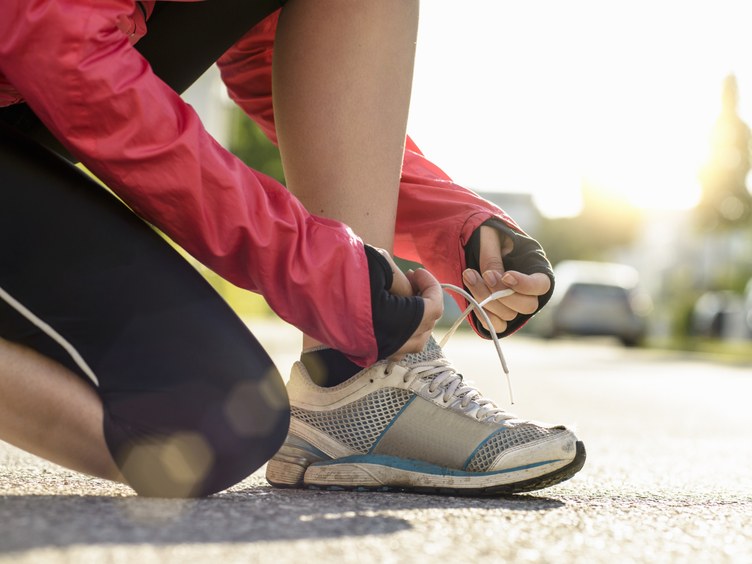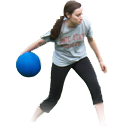15 Must-Know Tips For How To Get In Shape In 2017
If your New Year’s Resolution is about getting in shape, there are some things you should know
15 Must-Know Tips For How To Get In Shape In 2017
If you’re one of the (many, many) people who Googled “how to get in shape” during the first week of January this year, first of all, you likely know that you’re not alone. And second, take a minute to think about how many years in a row you’ve actually searched for that exact phrase, or something at least pretty close to it. New Year’s Resolutions… shudder. If we can quote Taylor Swift for a moment, they’re kind of like a “nightmare dressed like a daydream.” That’s because we set them when enthusiasm, motivation, and excitement levels are at an all-time high. But after a few weeks of genuinely hard work, those goals that were once so clear and obvious become a bit less so. In other words, life gets in the way. Until the next January, when (if you’re like, oh, most people) you make the same resolutions all over again. And cue the cycle. Maybe the better term to Google wasn’t “how to get in shape” but “how to make fitness a regular and sustainable part of my life.”
So let’s look at it from that perspective. If you’re interested in become fitter, healthier, stronger, or in better shape (whatever that means to you) in 2017, let’s assume that you don’t want to have to do it all over again next year. And in that case, there are definitely things you can do to turn your short-term changes into genuinely long-term sustainable lifestyle adjustments. We reached out to top trainers across the industry, as well as mined our own fitness and health stories, looking for the best tips for how to get in shape—and stay there. Here you’ll find a wide range of tips and advice, from specific types of workouts to try, to the importance of good sleep and recovery, to actionable practical tips about how to set goals that are attainable and realistic and don’t sacrifice your physical or mental health.
More than anything, though, the most important advice we and the experts have to share with you is to focus on health and happiness first. Be good to your body, and treat yourself with respect. Set realistic expectations, be kind to yourself, and recognize how awesome you are, independent of your shape-up goals. That’s the best advice of all.
1. Focus on athletic gains, rather than aesthetic gains.
“Focus only improving performance, strength, speed and consistency this year. Take the emphasis off the aesthetic results, and put it in becoming the best athlete you can become. Your body will change so much faster!” – Ashley Borden, celebrity trainer
2. Write this down: Resistance training, protein, and HIIT cardio.
“Promise to do resistance training three times per week even if you have to skip cardio to honor that–you’ll thank me next January. Promise to eat your protein first at lunch. That way you’ll make sure to get it in and by being more full, you’ll eat less complex carbohydrates at that meal. And, promise to end your cardio sessions with three, 15-seconds, all-out bursts with 30-seconds of rest in between. You can do more but promise to do at least three. This is a great way to stoke your metabolic fire and keep you lean.” – Gunnar Peterson, celebrity trainer
3. Set realistic expectations, and recognize that not all goals are worth pursuing, especially if they compromise your health or happiness.
A few months back, we shared the story of certified personal trainer Noelle Tarr, the blogger behind Coconuts And Kettlebells and co-host of The Paleo Women Podcast.
Tarr shared with us that when she was in college, she put her body and life through hell, all for the purpose of trying to get six-pack abs. “When I went to college, I thought that the way I looked really mattered, and I really wanted to be perceived as strong and lean,” she told SELF. “I believed that in order to have respect and be worthy and valued, I needed to represent what I thought that was, which was being very thin and having a six-pack.”
This unhealthy attitude led to a very unhealthy lifestyle for her—Tarr became sick, tired, and eventually, seriously injured (and, for what it’s worth, still didn’t have a six-pack). “Because I was putting so much effort into my workouts, not only did I not have much of a social life, but I was also always injured,” says Tarr. “As a 22-year-old, I had knee issues, back issues, plantar fasciitis…anything that you could have, I had it. And once I dropped below 19 percent body fat, my period just stopped.” She eventually suffered a major hip injury and had to stop working out entirely to give her body time to rest.
After everything she’d been through, she eventually realized that her goals were harmful and unhealthy—and she needed a mental re-set. “You can live and exist in a state of working out all the time, but it can require you to compromise your health,” she told SELF. “You don’t need to be able to see your abs muscles in order to have a really strong core that is powerful and supports you,” she said. “Strong bodies can be all shapes and sizes.”
4. Find a workout you love—you’ll be more likely to keep at it!
“Do what you love! If you’re not a runner or a cyclist, don’t force yourself. If you feel unstoppable on the dance floor, dance! If feel like a kid when you’re in the pool, swim more! The exercise that burns the most calories is the workout that you can see yourself doing daily.” – Sadie Kurzban, Founder/CEO of 305 Fitness
5. Use POWER words that make you feel motivated.
“Saying ‘I can’t eat that’ is restrictive, while saying ‘I don’t eat that’ is powerful and sets you up for success. And, work on one small goal at a time. Master it, and move forward.” – Hannah Davis, celebrity trainer
6. You should take recovery and rest days really seriously.
We wrote a story recently defending steady-state cardio—when you do lower-intensity exercise for an extended period of time. Steady state cardio has a reputation for not being as effective or efficient as higher intensity exercise, but the truth is that it’s a valuable type of exercise in its own right, for a variety of reasons. One of those reasons: It can be ideal for active recovery, and is sometimes a necessary buffer between tough HIIT sessions. From the original article:
“You can’t do five or six days in a row of high-intensity exercise,” Andrew Kalley, founder of Kalley Fitness and NYC-based triathlon coach and personal trainer, told SELF. If you’re doing HIIT all the time, it’s just too much stress on your body, and it’s going to break you down. Some people will hit a wall and need to take days off, but for others it may mean injury or getting sick,” he explains. You may even start to see diminishing returns, meaning any progress you’re making will begin to slow down and eventually stagnate—as your body gets tired out, your workouts will become weaker, slower, and less effective. When you’re overworked, the work you do put in isn’t going to be quality anymore.
Instead of going hard every time you work out, try to alternate high-intensity days with steady-state ones (or even a full-out rest day). As a rule of thumb, Kalley says you shouldn’t do more than two legitimately hard workout days in a row. Giving your body time to recover in between allows you to come back even stronger on the harder days. Steady-state cardio is a great choice for those who don’t want a full day of complete inactivity but know they need to give the body a break.
7. Grab a pen. Now write down what you want to get rid of—and burn it. And THEN write what you want to cultivate—and put it somewhere you can see every day.
“My family and I have a tradition that I love during New Years. We write one thing down we want to let go of and we burn that piece of paper in the fire. This year I wrote ‘hiding behind my computer screen’ because I want to focus on direct communication. On another piece of paper we write one thing down we want to cultivate for the year. This piece of paper lives on my bathroom vanity where I will see it each day. I like the idea of working towards something versus setting strict resolutions. On my vanity this year are two words: Pure and Chill. Pure to remind me to be honest with my intentions, and chill to remind me to cultivate a sense of calm in my life (and that includes not being stressed out if I fail to be pure!).” – Sadie Lincoln, founder of barre3
8. Getting good sleep is even more important than working out. Seriously.
No, seriously. Your body functions holistically—when you get crummy sleep or eat poorly, your workouts are going to suffer. And if your goal is to have strong and successful workouts (or to eat healthy and nutritious food), then getting good sleep is an absolutely critical part of that equation. In a previous story, we addressed the question: What’s more important, sleep, or exercise? This was in response to an interview that trainer Anna Kaiser of AKT gave to New York Magazine, in which she said, unequivocally, that people should prioritize sleep. “Sleep more,” Kaiser told New York Magazine’s The Cut. “I don’t think anyone understands how important it is. If you have a choice where you’ve only been sleeping five or six hours and can sleep an extra hour or work out, sleep an extra hour. You’re running your body down, which will affect your energy and hold onto excess water and weight.” Kaiser continued. “It will make you hungrier. Five to six hours for a week really prohibits your cognitive and hormone functions. You really need seven to eight hours. Working out harder or better or eating less isn’t the answer. It’s about getting enough sleep.” Here are the 10 rules you must follow to get good sleep, in case it helps.
9. Make action-oriented resolutions, not open-ended ones.
“When it comes to sticking to your resolutions, research has shown that ‘action-oriented’ resolutions have a better chance of being upheld than ‘idea-oriented.’ For example, a resolution to lose weight is really only an idea with nothing actionable to do. However, sticking with that goal in mind, you could make the resolution action-oriented by saying ‘get up 30 minutes earlier every Monday, Wednesday and Friday and do a 20-minute workout at home before work.’ Now you have an actionable path on how to achieve your goal.” – Brett Hoebel, celebrity trainer and creator of “20 Minute Body”
10. Set goals that you genuinely care about, and not goals that you think you should care about.
“First and foremost, make sure your resolutions are attainable! For example, if I know there are no means for me to practice swimming, I shouldn’t set a resolution (i.e. do a triathlon) that requires those skills. Resolutions, like goals, should be SMART (specific, measureable, attainable, realistic/relevant, time-bound). Secondly, and equally as important, is to make sure you actually care about the fitness resolutions you are setting. Don’t set them simply because someone else is setting it. Create goals that mean something to you.” – Chris and Heidi Powell, fitness trainers and hosts of ABC’s “Extreme Weight Loss”
11. Do what makes you happy.
“If your fitness routine isn’t making you happy, change it. If you hate doing something, don’t do it. There are a million ways to live an active lifestyle, so why not create one that thrills and fulfills you? I always tell my clients to approach movement with a grateful, open heart – in which case you’ll always feel invigorated by your fitness regimen and never depleted.” –Neghar Fonooni, fitness coach and creator of the Lean & Lovely Method
12. Choose one very specific goal, instead of something big and grand and too generic.
“Try not to over promise. Most people put too many things down in one big list of resolutions (lose weight, cut out sugar and alcohol, exercise every day, etc.), and it is impossible to accomplish all of them [at once]. Try to choose one very specific goal. For example instead of ‘working out more,’ try something like ‘do three, 30-minute workouts per week.’ Make your resolution easy to stick to so that you can achieve it, and maybe exceed it.” – Anna Kaiser, celeb trainer (to A-Listers like Sofia Vergara) and founder of AKT InMotion
13. Compound exercises are your friend.
Especially if you’re trying to burn fat or burn calories with greater efficiency. From the article 9 Things You Should Know About Working Out If You’re Trying To Lose Weight:
Doing compound exercises mean that more muscles are working with each rep. The more muscles you’re taxing, the more calories you’re burning. “When you combine movements and multi-task in the gym, you raise your heart rate and increase your calorie-burning potential. A bicep curl with a lunge, or a squat and a shoulder press are both great strength combos,” Sarah Pace, corporate fitness program manager and ACE in-home personal trainer and health coach, told SELF. Read more about the benefits of compound exercises and a few top moves to try here.
14. And learn to love foam-rolling, too, while you’re at it.
Foam rolling is crucial for recovery and building muscle. As we reported earlier, celebrity trainer Ashley Borden is a major proponent of foam rolling—for her clients, it’s a non-negotiable element of their fitness routine. That’s because spending a little one-on-one time with a foam roller can help improve your mobility so every exercise is more efficient and effective, putting you closer to your goals, whether you’re looking to build lean muscle or burn fat. Read Why Foam Rolling Is Crucial For Building Muscle to learn Borden’s tips for what you need to know about foam rolling, as well as how it can help you crush it at the gym.
15. And above all, be patient and forgiving of yourself.
“Be patient. Be forgiving. Be grateful. You’re human!” – Annie Mulgrew, Program Director, CityRow
A version of this story was originally published in January 2015.
Fitness||
Photo Credit: Buero Monaco / Getty Images





